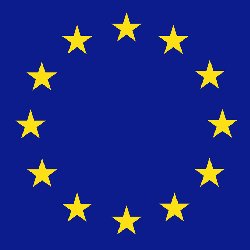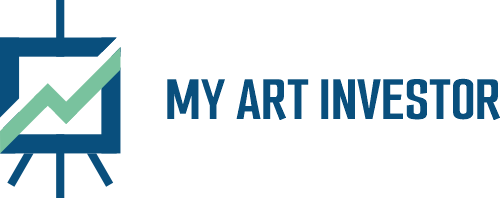
Art Investment Vehicles And Challenges Of Europe’s AIFMD Regime

European Union regulations on alternative investments, now in force, mean operators of art funds need to pay heed to the fine print, as this article explains.
Among the slew of regulations to have affected wealth
management recently has been the European Union’s Alternative
Investment Fund Managers Directive, which became UK law in July
2013. The AIFMD is, its framers say, designed to reduce risks in
alternative investment areas such as hedge funds, by demanding
more disclosure of information to clients and regulators and
setting requirements in areas such as custody. The AIFMD was
prompted by the financial crash of 2008, although critics argue
that hedge funds were not to blame for the crisis and that the
rules are heavy-handed and protectionist against non-EU
jurisdictions. Even so, the directive is now law. In this
article, Rand Willette, founder and managing director of Fine Art
Wealth Management, and David Eckner, executive manager of the
Center for Business and Corporate Law at Heinrich Heine
University of Düsseldorf, examine how art funds are affected by
the rules.
The editors of this publication are delighted to share these
expert comments with readers and invites responses.
As interest in art as an alternative asset class has grown in
recent years so has the emergence of art investment vehicles.
These vehicles seek to capitalise on the inherent inefficiencies
of the art market and provide the potential to identify, create
and execute transactions in works of art at highly attractive
terms. Art fund managers seek to approach art investment in the
same manner as any collective portfolio manager such as UCITS
management companies or alternative investment fund managers.
Proven techniques and disciplines common to the management of
every asset class are employed and modern portfolio theory,
sophisticated risk management tools, and quantitative and
qualitative analysis form the basis for investment strategy
and process.
By employing the expertise and market intelligence of a fund
manager, supported by robust financial and art market research,
art investment funds seek to provide investors access to high
potential opportunities typically captured only by the world’s
top art collectors and dealers. These funds are designed for
sophisticated and qualified investors seeking high levels of
return in an inefficient market through an optimised exposure to
art.
Regrettably, the amount of capital raised by art funds has
remained low relative to mainstream alternative investments such
as hedge funds and private equity funds as they lack the size and
scale required to attract institutional investors. Although
private investors are gaining appetite for passion investments,
the past few years have brought risk management and governance
concerns over such funds into sharper focus. This due diligence
process comes along with the challenges of art fund managers
faced with the potential implementation of the AIFMD.
AIFMD-compliant art fund managers
Whether through direct (or indirect) application of or opting
into the AIFMD, art fund managers are faced with numerous issues
when complying with the requirements of the directive.
These issues concern, inter alia, the operational requirements
and fiduciary duties, delegation of fine art portfolio
management, the valuation of art works, art risk and liquidity
management as well as AIFMD-compliant custody of fine art. The
entirety of issues for art fund managers relate to asset
class-specific circumstances, i.e. they stem from the uniqueness
and distinctiveness of fine art as an alternative asset
class.
The key characteristics and, inter alia, challenges of fine art
as an asset class – not only in collective investment structures
– are foremost the lack of liquidity due to long market cycles of
artworks, which can be between thirty to forty years, the
negative cost-income ratio during the holding period, the
non-transparent market environment, potentially high volatility,
especially of Post-War and Contemporary art, a high art title
risk exposure as well as valuation issues of fine art.
Among the aforementioned range of difficulties which cannot be
discussed in detail, the delegation of fine art portfolio
management and custody of fine art under the AIFMD are of
particular relevance. Given the AIFMD’s delegation requirements,
legally invalid delegation agreements may be identified in
situations in which the AIFM simply acts as a transaction
settlement agent prior to having external parties such as art
dealers or galleries advising and deciding on art investments.
Hence, an AIFM must not blindly apply external advice.
Notwithstanding, external advice and decision may be bought
without running the risk of invalid delegations in the case that
final investment decisions remain with the alternative investment
fund manager, for example by aggregating the external service
with the overall art portfolio’s return and risk
characteristics.
Furthermore, in light of the requirement to designate an eligible
depositary for the AIF’s assets, the relationship between the
AIFM and the depositary with regard to proper custody of the
fund’s assets is important. Given that fine art is not a
financial instrument, the depositary’s safekeeping duties are
adequate ownership verification and record keeping. Albeit a duty
of the depositary, the onus lies (also) with the AIFM. For
instance, the ownership verification of works of art produced
prior to 1945 may result in time- and cost-consuming provenance
research, accompanied by expert opinions of various art market
participants such as specialised provenance researcher, art
historians, lawyers and art appraisers. As the art investment
industry faces such AIFMD transposition issues for the first
time, it remains to be seen how the art market adapts to the
requirements and develops consolidated practices and procedures.
Art investment vehicle trends
Current trends point toward increased exposure to direct
investments in art, particularly among family offices.
Sophisticated investors tend to direct investments in order to
regain control and shift to psychic returns, as they become
dissatisfied with fund fee structures and traditional equity
markets.
The rate of direct investment in art by family offices is growing
as they start to look more and more like private equity, venture
capital, and hedge funds. However, multi-family offices managed
by a third party management company may run the risk to be
treated as AIF/M whereas single-family offices may be exempted.
Nevertheless, compelling is that family offices do not have to
pay the “2 & 20” typically garnered by fund managers. All this
suggests a trend that has momentum and will have some profound
effects on the art fund space over the coming years.
Since 2009, family offices have become significantly more
interested in making direct investments following the profound
impact of the economic crisis. According to studies carried out
by Wharton Global Family Alliance, a unit of the University of
Pennsylvania’s Wharton School in Philadelphia, US, that focuses
on wealthy families and their businesses, families have almost
doubled their investment allocations to direct investments in
companies and property.
We have also seen the emergence of managed accounts from art fund
managers seeking to provide investors with higher levels of
transparency and control, greater liquidity, and more flexible
fee schedules. As art fund managers wrestle with ways to attract
new capital infusion, one increasingly popular solution is to
offer private single owner accounts particularly for investors
with larger pools of capital to invest in art. While managed
accounts are introducing new support challenges for the art fund
industry, they do present a valuable opportunity for art funds to
attract clients and assets.
A managed art account is a specifically tailored dedicated
investment vehicle, often set up as a limited liability
corporation. All assets within the managed account are held in
the name of the managed account holder. The managed account
trading strategy generally mirrors a manager’s reference art
fund, but the investment mandates can be bespoke and tailored to
meet the investor’s individual requirements. Furthermore,
depending on the structure of managed accounts in casu, it cannot
be guaranteed whether managed accounts qualify as AIF, requiring
their operators to seek a licence under the national AIFMD
transposition regime.
Conclusion
As the industry evolves, it is clear that the winners will be
those art fund managers who have the operational flexibility to
adapt and provide products that meet investor’ needs. The AIFMD
as the European core regulation may provide advantages for art
fund managers as – despite operational issues on adapting to the
regulation – a potential “Fine Art AIF” increases the
attractiveness for (professional) investors seeking the benefits
of art investments as a portfolio diversification and inflation
hedge tool.
Moreover, the AIFMD’s European passport regime provides art fund
managers with potential liquidity through cross-border marketing
and distribution. With an AIFMD-compliant art fund manager, fine
art as an asset class may further attract investors, but may also
create synergies and a novel financing instrument for
participants beyond the alternative investment fund industry,
such as museums, individual and corporate collectors as well as
other members of the art market.
About the authors:
Randall Willette is the founder and managing director of Fine
Art Wealth Management, a professional membership-based advisory
firm that provides independent consulting to wealth managers and
their private clients on wealth structuring for art assets. Prior
to establishing the Company in 2003, he was executive director
and head of art banking for UBS Wealth Management in London
responsible for helping to build its global art banking franchise
in Europe and America. While there, he developed and implemented
a global marketing strategy for UBS art banking, integrating art
assets into the bank’s overall wealth management strategy for
private clients and established standards of best practice in art
due-diligence for the bank.
David Eckner, LLM (King’s College London),
JD (Düsseldorf) is executive manager of the Center for
Business and Corporate Law at Heinrich Heine University of
Düsseldorf (Germany), lecturer in securities law, regulation and
creative industries at Heinrich Heine University of Düsseldorf
(Germany), the Institute for Financial Services (Liechtenstein)
and Tilburg Law School (the Netherlands) as well as research
associate with the German fund management unit of HSBC Trinkaus.
David regularly publishes and presents on investment law and
regulation as well as on the impacts of regulation on fine art
investments.






No Comment! Be the first one.